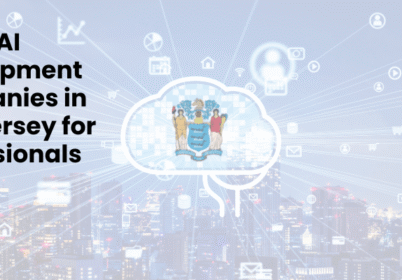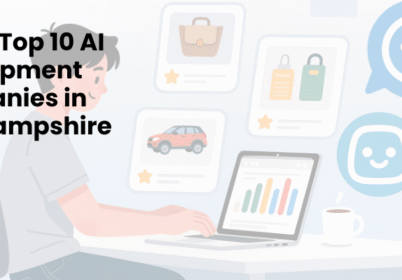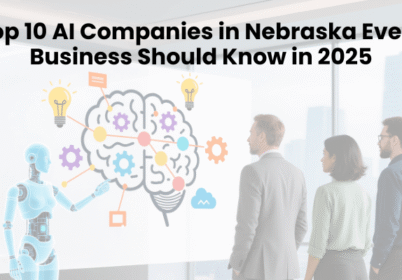AI Tools for Game Development in 2025: The Ultimate Guide
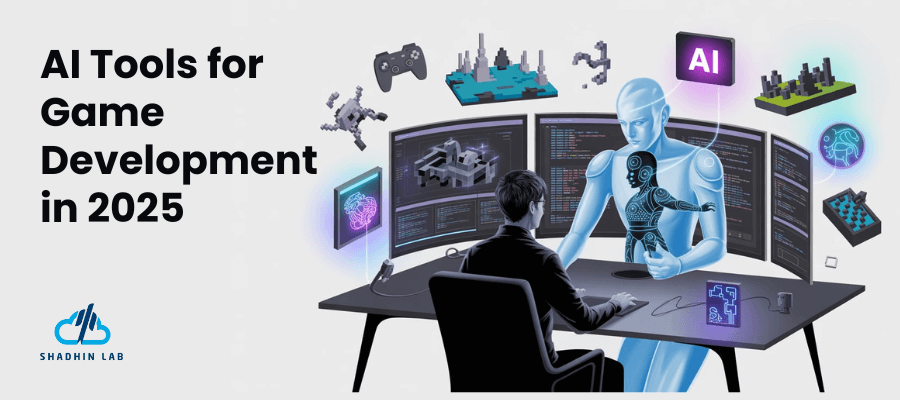
Table of Contents
The game development landscape has undergone a profound transformation over the past few years, with artificial intelligence emerging as a driving force behind innovation in the industry. In 2025, AI tools for game development have become indispensable for studios of all sizes, from indie developers to AAA powerhouses. These sophisticated technologies are reshaping every aspect of the game creation process, from concept art and asset generation to testing and optimization.
The integration of AI into game development workflows has significantly reduced production timelines while simultaneously elevating the quality and complexity of games. Developers now have access to powerful tools that can generate realistic environments, create compelling characters, automate repetitive tasks, and even predict player behavior. This technological revolution has democratized game development, allowing smaller teams to create experiences that would have previously required massive resources and manpower.
In this comprehensive guide, we’ll explore the most impactful AI tools transforming game development in 2025, examining their capabilities, practical applications, and the specific advantages they offer to modern game creators. Whether you’re a seasoned developer looking to optimize your workflow or a newcomer navigating the evolving landscape of game development technologies, this article will provide valuable insights into how AI is reshaping the future of game creation.
Key Takeaways:
- AI tools like 3DFY.AI and Scenario revolutionize asset creation, allowing developers to generate game-ready content from text prompts.
- Testing platforms such as Modl
use AI agents to simulate player behavior, dramatically improving quality assurance processes. - AI-enhanced workflows democratize game development, enabling smaller teams to create complex experiences with limited resources and time.
Table of Contents
The Evolution of AI in Game Development
The journey of AI in game development began with simple rule-based systems that controlled non-player character (NPC) behaviors through predetermined scripts. These early implementations offered limited adaptability and often resulted in predictable gameplay experiences. As computational power increased and machine learning techniques evolved, developers gained access to more sophisticated AI capabilities that could learn from player interactions and adapt accordingly.
Today’s game development AI tools leverage deep learning, generative adversarial networks (GANs), reinforcement learning, and other advanced techniques to deliver unprecedented creative and technical capabilities. This evolution has transformed AI from merely controlling in-game behavior to becoming an integral creative partner throughout the entire development process.
The Impact of Generative AI on Creative Workflows
The emergence of generative AI has perhaps been the most transformative development for creative workflows in game development. These powerful models can now generate high-quality assets, from concept art and textures to 3D models and animations, often with minimal human input beyond initial prompting. This capability has dramatically accelerated the prototyping phase of game development, allowing teams to visualize concepts and iterate on ideas at unprecedented speeds.
Generative AI has also democratized access to high-quality assets for indie developers and small studios that may lack specialized artists or extensive art budgets. By leveraging AI tools for initial asset creation, these teams can allocate their limited resources more effectively, focusing human creativity on refining and polishing AI-generated content rather than starting from scratch.
Top AI Tools for Game Art and Asset Creation
1. 3D Asset Generation Tools
3DFY.AI: Transforming Text Prompts into Game-Ready 3D Models
3DFY.AI represents the cutting edge of text-to-3D generation technology in 2025. This powerful tool allows developers to create fully textured and rigged 3D models simply by providing detailed text descriptions. The system leverages advanced deep learning techniques to analyze these prompts and generate corresponding 3D assets that align with the developer’s vision.

What sets 3DFY.AI apart is its ability to create assets that are immediately usable in game engines, complete with proper UV mapping, topology, and rigging structures. The tool offers extensive customization options, allowing developers to refine generated models through additional prompts or direct manipulation. This capability has proven particularly valuable for rapid prototyping and concept visualization, enabling teams to quickly test how different asset designs might function within their game environments.
The platform also offers style consistency features that ensure all generated assets maintain a coherent artistic direction, making it easier to create visually unified game worlds. With its intuitive interface and powerful generation capabilities, 3DFY.AI has become an essential resource for developers looking to streamline their 3D asset creation pipeline.
Promethean AI: Intelligent Environment Design Assistant
Promethean AI has evolved into one of the most sophisticated environment design tools available to game developers in 2025. This AI assistant works alongside artists to accelerate the creation of detailed 3D environments, learning from the artist’s style and preferences to suggest appropriate elements and arrangements.

The tool’s collaborative approach allows environment artists to describe scenes using natural language, after which Promethean AI generates complete environments that can be refined through further instructions or direct manipulation. This workflow dramatically reduces the time required to block out basic scenes, allowing artists to focus on adding unique creative touches and ensuring that environments effectively support gameplay requirements.
Promethean AI’s understanding of spatial relationships, scale, and artistic composition continues to improve through machine learning, with each interaction helping the system better understand the artist’s preferences and intentions. The tool also maintains an extensive library of assets that can be instantly incorporated into scenes, further accelerating the environment creation process.
2. 2D Art and Concept Development
Scenario: Game-Specific Art Generation
Scenario has established itself as the premier AI art generation tool specifically optimized for game development in 2025. Unlike general-purpose AI art generators, Scenario offers specialized capabilities tailored to the unique requirements of game artists, including consistent character generation, tileable texture creation, and sprite sheet production.
The platform’s standout feature is its ability to learn and maintain specific art styles, ensuring consistency across all generated assets. Developers can train Scenario on their existing art assets or reference materials to create a custom model that generates new content perfectly aligned with their game’s aesthetic. This capability has proven invaluable for maintaining visual coherence across large game worlds or during team transitions when new artists join a project.
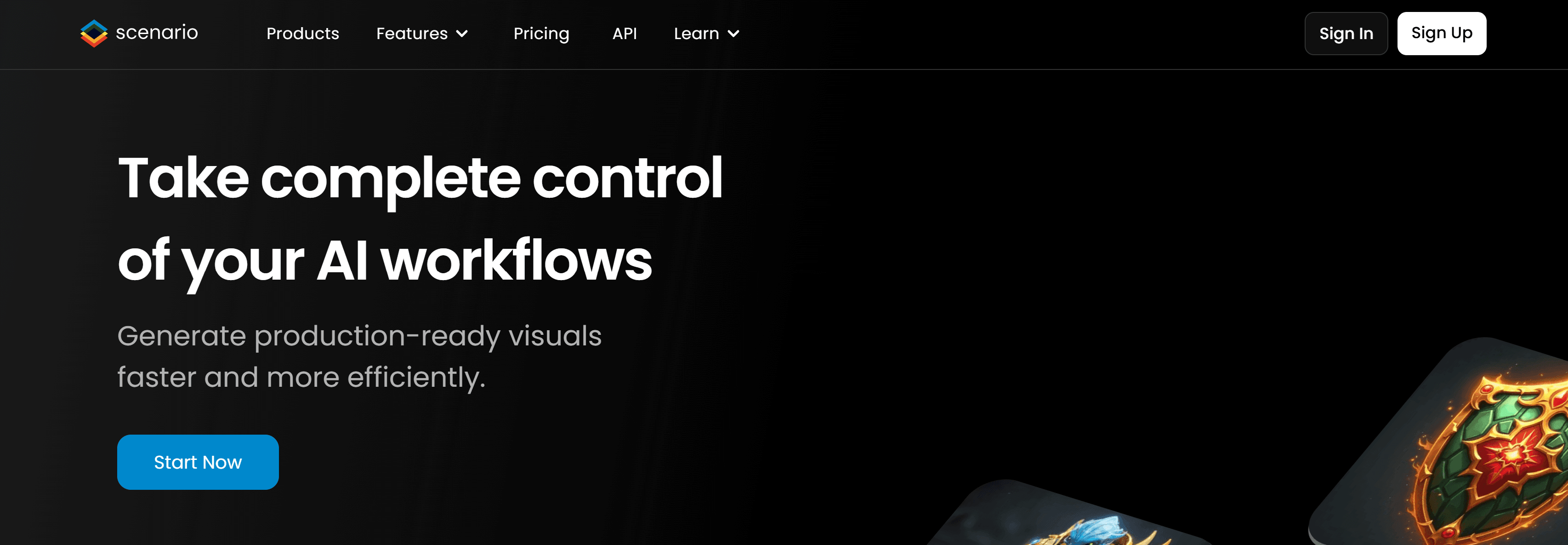
Scenario’s integration with popular game engines and art software further streamlines the asset creation pipeline, allowing for direct import of generated assets into development environments. The platform also offers collaborative features that enable art directors to establish style guidelines and parameters that ensure all AI-generated content remains within the project’s artistic vision.
Skybox AI: Dynamic Environment Backdrop Creation
Skybox AI has revolutionized the creation of atmospheric backgrounds and skyboxes for games across all platforms. This specialized tool generates dynamic, seamless environmental backdrops based on text descriptions, stylistic references, or mood parameters.
The system excels at creating cohesive sets of skyboxes that can transition smoothly between different times of day, weather conditions, or seasonal variations. This capability has proven particularly valuable for open-world games and titles featuring day-night cycles, where consistent yet varied environmental backdrops are essential for immersion.

Skybox AI’s outputs are optimized for game performance, with appropriate resolution and compression options for different platforms from mobile to high-end PC and console. The tool also supports the generation of parallax layers and depth maps, enabling more sophisticated visual effects and integration with modern rendering techniques.
3. Texture and Material Generation
Runway Gen 2: Advanced Material and Texture Creation
Runway’s Gen 2 platform has become an indispensable tool for game artists focusing on material and texture creation. This powerful system can generate highly detailed textures, from organic substances like skin, fabric, and foliage to hard-surface materials like metal, stone, and synthetic compounds.
The tool’s material generation capabilities go beyond simple color and bump maps to include complete PBR texture sets with albedo, normal, metallic, roughness, and displacement maps. This comprehensive approach ensures that generated materials look realistic under different lighting conditions and viewing angles within game engines.
Runway Gen 2’s ability to create variations of base materials has proven particularly useful for environmental artists, who can quickly generate diverse yet cohesive texture sets for large game areas. The platform also excels at texture transformation and blending, allowing artists to merge multiple materials or gradually transition between different surface types.
AI Art Cookbook: Prompt Engineering for Game Visuals
The AI Art Cookbook has evolved from a simple collection of prompts into a sophisticated system for consistent art direction in AI-assisted game development. This comprehensive resource provides game artists with optimized prompt structures and terminology specifically designed to achieve particular visual styles, materials, and atmospheric qualities.

What sets the AI Art Cookbook apart is its game-specific focus, with sections dedicated to different game genres and art styles ranging from pixel art and cartoon aesthetics to photorealistic rendering and stylized fantasy. Each entry includes example images alongside the exact prompts used to generate them, allowing artists to quickly find references relevant to their projects.
The platform now includes an interactive prompt builder that helps artists construct effective descriptions by suggesting appropriate modifiers and style references based on their initial input. This tool has proven invaluable for teams working with various AI art generation platforms, ensuring consistent results regardless of which specific generation tool is being used.
4. AI Tools for Animation and Character Movement
1. DeepMotion: AI-Driven Animation Creation
DeepMotion has transformed character animation workflows with its advanced AI-powered motion synthesis capabilities. The platform allows developers to generate realistic, physically accurate animations through multiple input methods, including text descriptions, reference videos, or motion capture data.
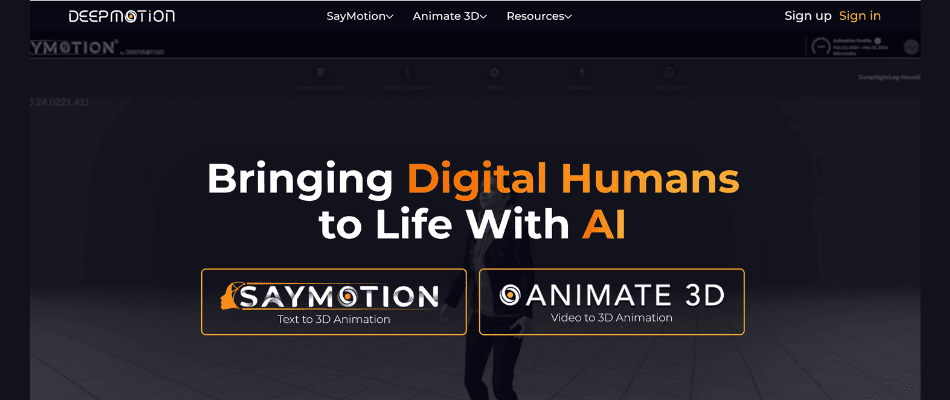
What distinguishes DeepMotion in 2025 is its physics-aware animation engine, which ensures that all generated movements adhere to natural physical constraints and principles. This results in convincing character animations that respond appropriately to environmental factors such as terrain, obstacles, and interactions with other characters or objects.
The tool’s procedural animation capabilities enable developers to create systems that adapt character movements to different situations dynamically. Rather than relying solely on pre-baked animation sequences, games can now incorporate more responsive and varied character movements that adjust naturally to changing gameplay conditions.
2. Cascadeur: Physics-Based Animation Assistant
Cascadeur has established itself as the leading AI-enhanced animation tool for creating physically accurate character movements. The system combines traditional keyframe animation techniques with advanced physics simulation and machine learning to help animators create movements that feel natural and weight-appropriate.
The platform’s AI assistant analyzes animations in real-time, suggesting adjustments to improve physical plausibility while maintaining the animator’s artistic intent. This collaborative approach helps bridge the gap between purely artistic animation and physically accurate movement, resulting in character animations that are both expressive and convincing.
Cascadeur’s specialized tools for common animation challenges—such as maintaining proper balance, creating realistic anticipation and follow-through, and ensuring appropriate weight distribution during complex movements—have made it particularly valuable for action games and titles featuring acrobatic character movements.
5. AI-Powered Game Testing and Quality Assurance
Modl:test: Automated Testing with AI Agents
Modl:test has revolutionized quality assurance processes in game development by deploying AI agents capable of systematically testing games with human-like behavior patterns. These intelligent testing bots can explore game environments, interact with mechanics, and identify bugs or performance issues that might otherwise require extensive manual testing.

The platform’s ability to simulate different player types and skill levels allows developers to ensure their games are balanced and accessible across a broad spectrum of players. Testing agents can be configured to play conservatively or aggressively, follow optimal strategies or explore unexpected approaches, providing comprehensive coverage of possible player behaviors.
Modl:test’s integration with popular game engines and development platforms enables seamless incorporation into existing CI/CD pipelines, with detailed reports highlighting discovered issues and their reproduction steps. This automated approach to testing has significantly reduced QA time and costs while simultaneously improving the thoroughness of testing processes.
Modl:play: Game Balance and Player Experience Optimization
Complementing Modl:test’s focus on technical quality assurance, Modl:play specializes in evaluating and optimizing gameplay experiences. This sophisticated platform uses AI agents to analyze game balance, difficulty progression, and overall player engagement across different segments of a game.
The system can identify potential bottlenecks, difficulty spikes, or pacing issues that might affect player retention, providing developers with actionable insights for refinement. By simulating thousands of play sessions with various player profiles, Modl:play helps developers understand how different types of players might experience their game and where adjustments might be beneficial.
Modl:play’s predictive analytics capabilities have proven particularly valuable for live service games, where understanding player progression and engagement patterns is crucial for long-term success. The platform can forecast how proposed changes might affect player behavior before implementation, reducing the risk associated with major gameplay adjustments.
6. Audio and Sound Design AI Tools
1. Sononym: AI-Powered Sound Organization and Discovery
Sononym has transformed audio asset management in game development with its innovative approach to sound organization and discovery. This AI-powered platform analyzes audio files based on their acoustic properties rather than relying solely on metadata or manual tagging, making it easier for sound designers to find exactly the right audio assets for their needs.

The system’s similarity search feature allows developers to locate sounds with specific characteristics by providing an example, even if those sounds are differently labeled or categorized. This capability has proven invaluable for maintaining audio consistency throughout games and quickly finding appropriate sound variations for different contexts.
Sononym’s audio analysis tools also help identify potential issues in sound assets, such as unwanted artifacts, excessive dynamic range, or frequency conflicts that might cause problems during implementation. This quality control aspect ensures that audio assets will perform well within the constraints of game engines and target platforms.
AI-Generated Game Music and Adaptive Sound Systems
The field of AI-generated game music has made remarkable strides by 2025, with several platforms now offering sophisticated tools for creating adaptive soundtracks and dynamic audio environments. These systems can generate original music compositions based on emotional parameters, genre specifications, or reference tracks, providing developers with customizable soundtracks that can adapt to gameplay situations.
Modern AI audio tools extend beyond simple music generation to create complete adaptive audio systems that respond intelligently to game states and player actions. These systems can dynamically adjust musical elements such as intensity, instrumentation, and tempo based on gameplay factors like combat intensity, exploration depth, or narrative emotional beats.
The integration of these adaptive audio capabilities with game engines has simplified the implementation of sophisticated sound design, allowing even small development teams to incorporate responsive audio systems that significantly enhance player immersion and emotional engagement.
Game Design and Narrative AI Assistants
NPC Behavior and Dialogue Generation
AI-driven NPC systems have transformed how characters behave and communicate in modern games. Advanced natural language processing and generation capabilities now enable more natural, contextually appropriate conversations between players and non-player characters, moving beyond the limited dialogue trees of previous generations.
These systems can dynamically generate dialogue that responds to player choices and actions while maintaining character consistency and advancing narrative goals. NPCs can form memories of player interactions, reference past events, and adjust their attitudes based on the player’s behavior, creating more believable and reactive game worlds.
Beyond conversation, AI behavior systems enable NPCs to demonstrate more convincing daily routines, environmental awareness, and situational responses. These improvements have particularly enhanced open-world and role-playing games, where believable character behaviors significantly contribute to player immersion.
Procedural Quest and Content Generation
Procedural content generation has evolved significantly with the application of AI techniques, moving beyond simple randomization to create more meaningful and cohesive procedural game elements. Modern AI systems can generate quests, levels, and narrative elements that feel purposeful and connected to the broader game world.
These procedural systems understand narrative structures, character motivations, and player progression, enabling them to create content that respects the game’s internal logic and provides appropriate challenges based on player skill level and advancement. The result is procedurally generated content that maintains the hand-crafted feel of designer-created elements while offering significantly greater variety and replayability.
For live service games, these AI content generation tools have become essential for maintaining player engagement through regular content updates without requiring proportional increases in development resources. The ability to quickly generate and validate new game content has allowed development teams to focus more on creative direction and less on routine content production.
Integration and Workflow Tools
Unity and Unreal Engine AI Integration
Major game engines have embraced AI technologies, with both Unity and Unreal Engine offering extensive integration capabilities for AI tools across the development pipeline. These integrations range from asset generation and management to runtime AI systems for character behavior and procedural content.
Engine-specific AI tools now provide optimized implementations of common game AI techniques, such as pathfinding, decision making, and perception systems. These built-in capabilities reduce the need for custom AI programming and ensure that AI behaviors perform efficiently on target platforms.
The plugin ecosystems for both engines have expanded to include specialized AI tools for various development tasks, from automated level design to performance optimization. These integrations allow developers to incorporate advanced AI capabilities while maintaining familiar workflows within their established development environments.
Version Control and Collaboration for AI-Assisted Development
As AI-generated content has become a larger part of game development processes, specialized version control and collaboration tools have emerged to address the unique challenges of managing and iterating on AI-assisted projects. These systems track not only the outputs of AI tools but also the prompts, parameters, and models used to generate them.
Modern collaboration platforms include features specifically designed for reviewing and refining AI-generated assets, allowing team members to provide feedback, suggest modifications, or approve assets for production use. These tools maintain comprehensive lineage information for all assets, making it possible to trace any game element back to its original generation parameters.
The integration of AI asset management with traditional development tracking systems ensures that teams maintain clear oversight of their projects regardless of whether assets are created conventionally or through AI assistance. This unified approach to project management has been crucial for studios transitioning to AI-enhanced workflows.
Future Trends in AI Game Development Tools
Self-Improving Game Development Systems
The horizon of game development AI includes systems that continuously learn and improve from their own outputs and developer feedback. These self-improving tools analyze successful assets, code patterns, or design elements to refine their generation capabilities over time, becoming increasingly aligned with a studio’s specific requirements and preferences.
Early implementations of these systems have demonstrated impressive capabilities for adapting to particular game projects, learning the specific art styles, code structures, or design patterns preferred by development teams. As these technologies mature, they promise to become even more valuable as long-term development partners that grow alongside studios and projects.
The potential implications of these self-improving systems extend to all aspects of game development, from art and audio creation to code generation and testing. The ability of AI tools to learn from both successes and failures within a specific project context represents one of the most promising avenues for future advancement in game development technology.
Ethical Considerations and Best Practices
As AI tools become more deeply integrated into game development processes, the industry has begun to establish ethical frameworks and best practices for their responsible use. These considerations include ensuring proper attribution for AI-assisted work, maintaining creative control and human oversight, and addressing potential biases in AI training data.
Industry organizations and leading studios have developed guidelines for ethically implementing AI in various aspects of game creation, from asset generation to player behavior analysis. These frameworks emphasize transparency about AI use, respect for artistic contributions, and the importance of using AI as an enhancement to human creativity rather than a replacement.
Best practices have emerged for different AI implementation scenarios, providing developers with roadmaps for successfully incorporating these powerful tools while avoiding common pitfalls. As AI capabilities continue to advance, maintaining thoughtful approaches to their application will remain essential for realizing their benefits while mitigating potential risks.
Conclusion
The integration of AI tools into game development processes represents one of the most significant transformations the industry has experienced. These technologies have expanded creative possibilities, accelerated production timelines, and made sophisticated game development more accessible to teams of all sizes.
As we’ve explored throughout this guide, AI tools now touch every aspect of game creation, from initial concept art and asset generation to testing and optimization. The most successful implementations of these technologies treat AI as a collaborative partner in the creative process, amplifying human creativity rather than replacing it.
For developers looking to enhance their workflows with AI tools, the key is starting with clear objectives and understanding which aspects of development would benefit most from AI assistance. By thoughtfully incorporating these powerful technologies into existing processes and allowing time for teams to adapt and learn, studios can realize significant gains in both productivity and creative possibilities.
As AI capabilities continue to evolve, staying informed about new tools and approaches will be essential for competitive game development. The studios that most effectively harness these technologies while maintaining their unique creative vision will be well-positioned to create the innovative, engaging, and technically impressive games that define the industry’s future.
FAQs
What are the best AI tools for game asset creation?
Skybox, Scenario, and 3DFY.AI are top choices, offering fast, customizable, high-quality asset generation for 2D and 3D game environments and characters.
How can AI help in mobile game development?
AI streamlines game development by generating assets, automating testing, balancing gameplay, and enhancing visual and audio elements, significantly reducing production time and costs.
Is AI useful for indie game developers?
Yes, AI tools level the playing field by automating complex tasks, allowing indie developers to create polished, competitive games without large teams or budgets.
Which AI tools assist in game animation?
Cascadeur and DeepMotion are powerful tools that offer physics-based animation and motion capture, helping developers create realistic character movements quickly and efficiently.
Are AI tools for game development expensive?
Many AI tools offer free or affordable plans. Prices vary by features and usage, making them accessible for both hobbyists and professional game studios.
Shaif Azad
Related Post
Top 10 AI Development Companies in New Jersey for Business
Are you searching for the perfect AI development partner in New Jersey? Have you wondered which...
Top 10 AI Development Companies in New Hampshire
Are you watching New Hampshire’s tech landscape transform before your eyes? Your state is quietly becoming...
Top AI Companies in Nebraska Every Business Should Know
Are you a Nebraska business owner wondering how artificial intelligence could transform your operations? Picture this...

